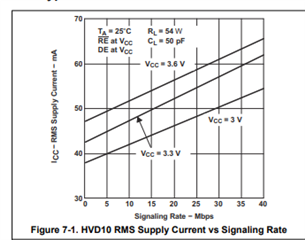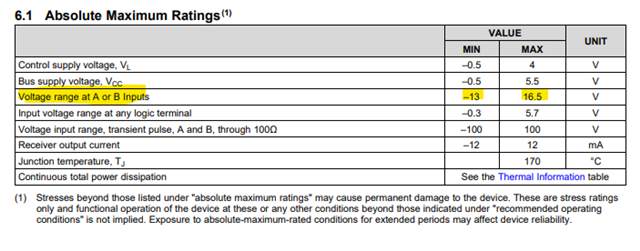Other Parts Discussed in Thread: SN65HVD10
Tool/software:
Team,
About the SN65HVD01, I checked the datasheet and have one question about the power consumption of this component.
In my customer design, the signal rate is very low (1pps) or data/ctrl message (<500kHz).
- We want to know what’s the typical and maximum power consumption of SN65HVD01 when it’s supplied by 3.3V.
- When SN65HVD01 is in driver or receiver mode, does the typical/maximum power consumption is same? If not, what’s the value for driver or receiver?
And we also got same question about the SN65HVD10, can you also share the data?
Thanks!
Regards,
Qiang






